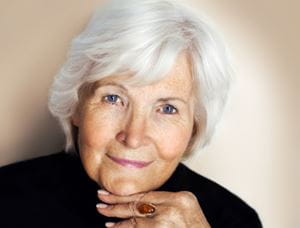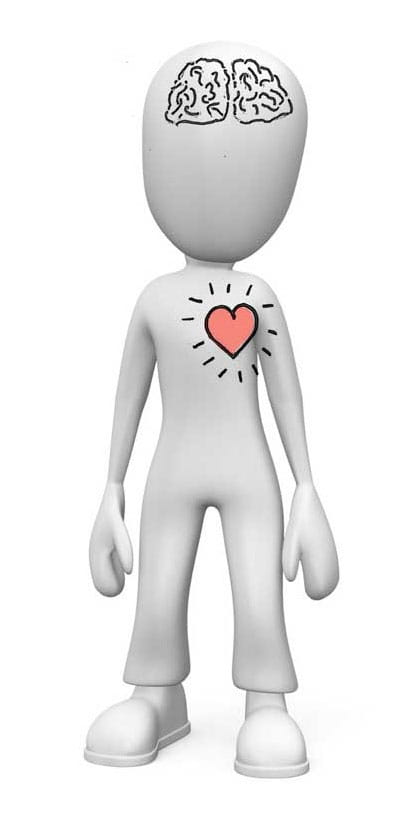If the MBTI was a person, would it embody lifelong learning?
TeriSmith

As you may have heard, the MBTI questionnaire turns 70 this year; the Myers-Briggs Type Indicator is a long way from retirement, however. It is a sprightly septuagenarian, able to draw on all the wisdom accumulated during those seven decades, yet still able to adapt and change.
In many ways, the development of the MBTI questionnaire itself mirrors what MBTI theory says about how people develop through their lifetime. To illustrate this, let’s look first at how we develop as individuals. This is all based around the dynamics of each type. If you are not familiar with type dynamics concepts, read the section at the end of this article. Otherwise, read on!
 Jung suggested that everyone has an inborn drive to develop and become the best version of themselves that they can be. This means that each type has its own path to lifelong development, starting with developing the dominant function, then the auxiliary, then the tertiary and finally the fourth (or ’inferior’) function.
Jung suggested that everyone has an inborn drive to develop and become the best version of themselves that they can be. This means that each type has its own path to lifelong development, starting with developing the dominant function, then the auxiliary, then the tertiary and finally the fourth (or ’inferior’) function.
This might sound a little abstract, so let’s apply it. And just for fun, rather than apply this to a person, I’m going to apply it to the MBTI instrument itself. If we are going to look at the personality of a ‘thing’, I thought it would be interesting to use the personality type of the author of the questionnaire, Isabel Briggs Myers, to do this. Isabel had preferences for INFP, so:
- The dominant function is Introverted Feeling.
The MBTI tool began life as an expression of the strongly held values of Isabel Briggs Myers and her mother, Katharine Cook Briggs. These values, respecting all individuals and celebrating the constructive use of our individual gifts, remain right at the core of the MBTI system to this day – just as a person’s dominant function remains central to their outlook throughout their life. It is also true that the MBTI questionnaire was developed in quite an ‘Introverted’ way: although Katharine and Isabel began looking at type concepts in 1923, these ideas were initially only shared with family and friends, and was done by recording and rearranging information on cards rather than going out and brainstorming ideas with many other people. Development of the questionnaire itself did not begin until the 1940s, and the first MBTI manual was not published until 1962; many Introverts want to make sure that they have fully worked through their ideas before they are comfortable and ready to share them. - The auxiliary is Extraverted iNtuition.
As the development of the questionnaire continued, Isabel engaged more and more in sharing ideas and possibilities with others. She was a pioneer in seeing how self-awareness of individual differences could be applied to make the world a better place, and was so convinced of this that she didn’t let her critics divert her from this goal. The instrument became increasingly well known and, with publication, available to the outside world. Her passion for the power and potential of the instrument was infectious and today the questionnaire, reports and other resources include contributions from practitioners and experts from around the globe. - The tertiary function of INFP is Sensing.
As the MBTI instrument grew in popularity and its use matured, a wide range of resources and reports were developed to help practitioners use the tool for their needs in practical ways. Organisations started to realise the practical value of applying the MBTI tool to address real-world issues such as how to build teams, improve communication or address conflict. Close to three-quarters of the population have preferences for Sensing, so it is not surprising that the MBTI instrument became more and more popular as the tool was made even more accessible and immediately applicable. The simple framework of the MBTI model is one that people can easily remember and therefore use every day. - The fourth function is Extraverted Thinking.
Hard-nosed statistical research was carried out and published widely to look at the reliability and validity of the questionnaire. The MBTI Step II instrument was developed in the 1970s using the latest statistical techniques, putting an additional logical structure on the type framework. Commitment to ongoing research and use of leading-edge analytical techniques continues to the present day. Moreover, businesses have learned the commercial advantages and positive return on investment from using the MBTI tool to enable their people to develop to be the best that they can be.
So what next for the MBTI tool? Through its first 70 years it has enjoyed considerable personal development, and is now in the prime of life: better developed than any other personality instrument on the market.
The second part of life can be the time when we truly become ourselves, integrating all of our functions together to achieve wisdom (Nancy Barger’s recent webcast on this topic has some fascinating insights). For MBTI users, this offers the possibility of continual renewal, with practice based on an established tool with a depth of research and theory, together with an unrivalled range of resources to support its application to all walks of life. But we are not complacent, and understand that development is not something that stops when a particular goal is reached. So while the MBTI tool may have reached this magnificent milestone, it will continue to evolve to meet the ever-changing needs of people around the world, with new approaches to measurement and new resources and techniques to help individuals and groups follow their own developmental path.
An explanation of type dynamics
In developing his theory of psychological type, upon which the MBTI instrument is founded, Carl Jung suggested that at any one time we might be doing one of two things:
We might be taking in information from the environment, a process that Jung called Perceiving. There are two different ways in which we might do this:
- Sensing: taking in real-life information from the external world or from our stored memories

- iNtuition: looking at connection, possibilities and the big picture

OR we might be making a decision or judgment on the basis of this information, a process that Jung called Judging. Again, there are two different ways in which we might do this:
- Thinking: making the logical, rational decision

- Feeling: making a decision that takes into account our own and others’ values and feelings

We all use all four of these functions, but there will be one of these that we use and trust most (our dominant function), and one we use in a support role to the dominant (our auxiliary function). By adulthood, the goal is to have both these functions well developed so that we have a reliable way of taking in information and of making decisions. In the second half of life, we integrate our less preferred functions (the ones that do not appear in our four-letter type code); these are our tertiary function and fourth or inferior functions).
For more information on this area, Introduction to Type Dynamics and Development is a good starting point.